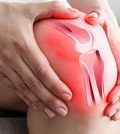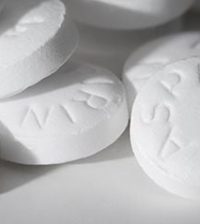- Fragments of Bird Flu Virus Found in U.S. Milk Supply
- There’s an ‘Epidemic’ of Loneliness Among U.S. Parents, Poll Finds
- Infertility Is Rising Among Young Married Women
- New Rules Mean 3.6 Million Americans Could Get Wegovy Via Medicare, Costing Billions
- ‘Dream It, Be It?’ Study Finds Teens Who Focus on Life Goals Often Succeed
- Trying ‘Magic Mushroom’ Drug to Ease Depression? It Has Side Effects
- $282 Billion: What Mental Illness Costs America Each Year
- Black, Hispanic Americans Getting Savvier About CPR
- Kids With Common Skin Conditions Face Stigma, Bullying
- Science Reveals How Aspirin Prevents Colon Cancer
‘Super-Magnets’ Pose Rising Threat to Kids, Study Finds


SUNDAY, Oct. 27Powerful “super-magnets” found in adult desk toys and other novelty items still trigger many emergency-room visits after children swallow them, according to a new report, even though some products with these magnets have been recalled.
“These ingestions have increased over the past three to five years,” said study researcher Dr. Daniel Rosenfield, a pediatric resident at the University of Toronto and the Hospital for Sick Children, in Canada.
At the hospital, Rosenfield’s team looked back at the records involving about 2,700 ingestion incidents from 2001 through 2012. They found that 94 involved magnets, with ingestion of multiple magnets increasing the most in the last three years of the study.
These neodymium-iron-boron magnets became popular about that time, sold in toys, jewelry and other novelty items, including desk toys used for fun and stress relief by adults. These desk toys include magnetic marbles and magnetic sculpting balls.
Rosenfield is scheduled to report the findings Sunday at an American Academy of Pediatrics meeting in Orlando, Fla.
Although recalls are in place for some of these products in both the United States and Canada, many of the items are still in circulation or available online, Rosenfield said. Many parents, as well as teachers and others, remain unaware of the dangers of these magnets, he said.
“The problems with these multiple magnets is, if you ingest more than one at a different point in time, they can attract [each other] across loops of the gut, causing pressure to build up,” Rosenfield said.
In the study, the children ranged in age from 7 months to 13 years, but the average age was about 4 years.
In the case of the 13-year-old, Rosenfield said, the teen was trying to mimic a tongue piercing with a stud, and swallowed three magnets.
Six children had to be taken to the operating room to remove the magnets and others had to have them removed by way of an endoscope or tube, according to the study. Others were given laxatives or were observed to see if the magnet passed. No deaths occurred.
Children often ingest the magnets without a parent knowing, Rosenfield said, so parents and doctors should be alert to the possibility of magnet ingestion if a child complains of stomachache without apparent causes. With an abdominal X-ray, he said, ingestion can be detected fairly quickly.
The problem of magnet ingestion is ongoing, said Dr. Cathy Burnweit, chief of pediatric surgery at Miami Children’s Hospital. Burnweit reviewed the study but did not participate in it. She said she has often treated children who have swallowed magnets, although coins are what she fishes out most often.
“Sometimes magnets get stuck in the lower throat,” Burnweit said. “If they get through there, a solitary item will usually pass into the stool.” But the scenario described by Rosenfield also occurs, she said. “If there are two magnets and they are in different places, the loops of bowel will be drawn together and can rupture the intestines,” she said. “This can happen within hours to days.”
Parents are busy, she said, but more awareness is key. “Be very cognizant of toys, coins and little objects, particularly in the toddler age group,” she said. If an object can fit down the diameter of a toilet paper roll, she said, “children have been known to swallow it.”
The U.S. Consumer Product Safety Commission held a hearing earlier this month, asking experts to comment on its proposed new rule to prohibit sales of the super-magnet products.
Because the new study was presented at a medical meeting, the data and conclusions should be viewed as preliminary until published in a peer-reviewed journal.
More information
To learn more about magnet risks, visit the U.S. Consumer Product Safety Commission.
Source: HealthDay
Copyright © 2024 HealthDay. All rights reserved.










